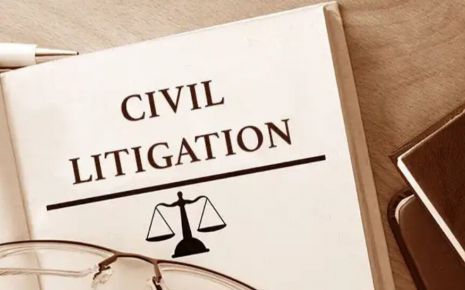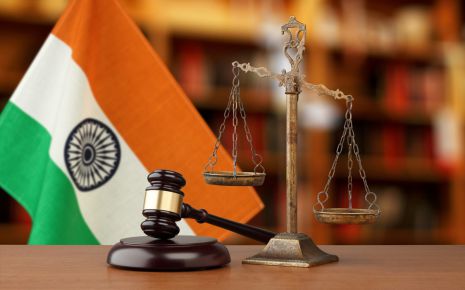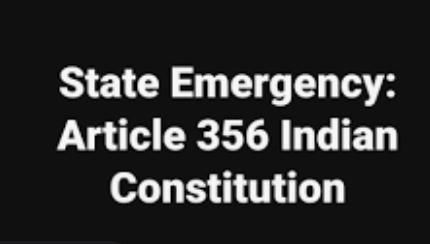Good Faith Exemption From Negligence Liability
Mutual good faith is a basic ingredient of the patient-doctor relationship
Frivolous negligence claims and perverse medical negligence judgments based on ill-applied legal fiction without cogent medical findings has greatly eroded public trust in the medical profession. It is high time that the doctrine of good faith is given credence to restore public trust. The doctrine of good faith is based on robust medico-judicial processes.
A patient approaches a doctor in good faith and trusts him to alleviate his suffering. The doctor is under obligation, in equally good faith and to the best of his abilities to take care of his patient and live up to the trust the patient has reposed in him.
There is nothing more unnerving and disturbing for a doctor than for him to be a subject of a medical negligence suit. The fear that virtually any case may lead to a negligence complaint is constant and stressful to the physician.
Apprehension leading to mistrust is mutual. On the one hand, a physician worries about a lawsuit while, on the other, the patient, who has no alternative but to trust himself or his loved one to the physician, is constantly apprehensive that such treatment might result in complications including death.
What can be done to restore the patient's faith? While the practitioner of modern medicine should be prepared to submit to rigorous medico-legal accountability according to the law of the land, the patient and the judiciary have to be aware of the serious limitations that stand in the way of laypersons adjudicating in medical matters as well as the lack of effective regulatory mechanisms that govern medical practice in the country.
Frivolous complaints of medical negligence should not be entertained by implementing laws laid down by the Supreme Court as in the cases of Jacob Mathew and Martin D'Souza. [1] The legislature may enact law on the directions of the court.
The Supreme Court has already stated:
"Statutory rules or executive instructions incorporating certain guidelines need to be framed and issued by the Government of India and/or the State Governments in consultation with the Medical Council of India". An enactment could be similar to that in the State of Connecticut in the USA which requires due certification of good faith by the complainant, based on the opinion of a medical expert as prerequisite to the court taking cognizance of the case.
The statutory provisions that govern patient-doctor relationship, patient's rights and a doctor's obligations are set out in Section 88 of the Indian Penal Code which states as follows:
Nothing, which is not intended to cause death, is an offence by reason of any harm which it may cause, or be intended by the doer to cause, or be known by the doer to be likely to cause, to any person for whose benefit it is done in good faith, and who has given a consent, whether express or implied to suffer that harm, or to take the risk of that harm.
In simple terms, this means that if an act is done in good faith and is not intended to cause harm (including death); and the person for whom it is done gives express or implied consent to risk or suffer this harm, then the act is not considered an offence.
Every medical intervention technically injures the patient to a certain degree, and section 88 of the Indian Penal Code also recognizes that such harm, including death, is possible following medical intervention. The law permits such injury because the intervention was carried out for the benefit of the patient. The binding stipulations are consent and good faith.
An adverse event (AE) is a harmful and negative outcome that occurs when a patient undergoes medical care. It occurs frequently (one in ten patients suffers an AE) and in a variety of medical interventions - surgical and non-surgical - and across most specialties. Theoretically, therefore, any patient may experience a negative outcome as a result of treatment. These adverse events include the side effects of medication, injury, psychological harm and death. Adverse events may not necessarily be preventable.
There are already several prescribed protocols to prevent or minimize adverse events.
The following are such examples of event-specific protocols:
Whenever an adverse event is under judicial scrutiny, the hospital must be asked if specific, prescribed safety mechanisms were in place or not. In case they were not in place, the hospital should be penalized for deficiency and should give an undertaking to introduce such mechanisms.
It is manifestly unfair for the judiciary to simply state that an adverse incidence was a result of "medical negligence" and then proceed to penalise the concerned physician. If the evidence shows that the treating physician willfully and intentionally caused injury or death, he may be held criminally liable under general laws. The latter instance is, happily, rare since few physicians would want to willfully harm a patient.
Harm resulting from error of judgment or accident or surgical misadventure cannot be attributed to negligence. The patient nevertheless is certainly entitled to be compensated for the harm suffered even though there is no fault on the part of the hospital or the treating physician. There should therefore be a mechanism in place to suitably, even liberally, compensate patients for all such harms caused and this may be termed a "no-fault compensation". Hospitals must provide for it and proper guidelines for no-fault compensation should be framed. The hospitals may set apart percentage of its revenue or take a suitable indemnity insurance to cover for such exigencies.
Clearly, for genuine mistakes in a honestly administered treatment, a physician is entitled to be exempt from the liability of negligence under the good faith doctrine of statutory provisions of Section 88 of the Indian Penal Code. It must be reiterated that, under this section, such exemption will be available only if the treatment is demonstrated to have been done with due competence, care and caution and after taking proper consent. A court must verify these prerequisites. Unfortunately, this is not done objectively in consumer forums as there are no judicial guidelines issued.
For verifying a physician's competence the court should verify the physician's qualifications, license and experience in the field. The respondent physician must submit a satisfactory reply.
Care is the timely fulfilment of the diagnostic and therapeutic needs of the patient. It can be verified only from the review of the patient record. The respondent doctor should submit transcribed, chronological details of the patient record in his reply so as to present an account of the case details as a time-line. Unfortunately, this is not insisted by the courts. Instead, the complainant's narrative, which is usually an incoherent bundle of allegations and out-of-context, self-perceived facts, is given to the accused doctor for a para-wise reply.
Since the sequence of treatment interventions is case, context and situation specific, a retrospective review of patient record by experts should be a standard protocol. Since he lacks comprehension of the disease episode and cannot expertly comment on the context-specific response by a physician, a judicial officer should and must seek the help of a medical expert.
This expert opinion must be given to the respondent physician so that he may, if he desires, respond either personally or with the assistance of the opinion of other experts. All this needs to be done before the judicial officer can honestly and comprehensively analyse the case and pronounce a just verdict. This is what was done in the Martin D'Souza case but, sadly, in that instance it was an exception.
For establishing that caution was exercised, the respondent physician should submit evidence that consent was taken after due disclosure and that there were preventable protocols in place in the medical centre to prevent an occurrence of that particular adverse event.
In summary, if a careful verification of the concerned documents shows that a competent physician exercised care and caution, he should be held to have acted in good faith and should not be held negligent. A consumer forum or, for that matter, any judicial institution, should not be allowed to function like a kangaroo court or Kajiji ki kachaheri.
Written By: Dr.Shri Gopal Kabra
15, Vijay Nagar, D-bloc, Malviya Nagar, Jaipur-302017
Ph no: 8003516198
Frivolous negligence claims and perverse medical negligence judgments based on ill-applied legal fiction without cogent medical findings has greatly eroded public trust in the medical profession. It is high time that the doctrine of good faith is given credence to restore public trust. The doctrine of good faith is based on robust medico-judicial processes.
A patient approaches a doctor in good faith and trusts him to alleviate his suffering. The doctor is under obligation, in equally good faith and to the best of his abilities to take care of his patient and live up to the trust the patient has reposed in him.
There is nothing more unnerving and disturbing for a doctor than for him to be a subject of a medical negligence suit. The fear that virtually any case may lead to a negligence complaint is constant and stressful to the physician.
Apprehension leading to mistrust is mutual. On the one hand, a physician worries about a lawsuit while, on the other, the patient, who has no alternative but to trust himself or his loved one to the physician, is constantly apprehensive that such treatment might result in complications including death.
What can be done to restore the patient's faith? While the practitioner of modern medicine should be prepared to submit to rigorous medico-legal accountability according to the law of the land, the patient and the judiciary have to be aware of the serious limitations that stand in the way of laypersons adjudicating in medical matters as well as the lack of effective regulatory mechanisms that govern medical practice in the country.
Frivolous complaints of medical negligence should not be entertained by implementing laws laid down by the Supreme Court as in the cases of Jacob Mathew and Martin D'Souza. [1] The legislature may enact law on the directions of the court.
The Supreme Court has already stated:
"Statutory rules or executive instructions incorporating certain guidelines need to be framed and issued by the Government of India and/or the State Governments in consultation with the Medical Council of India". An enactment could be similar to that in the State of Connecticut in the USA which requires due certification of good faith by the complainant, based on the opinion of a medical expert as prerequisite to the court taking cognizance of the case.
The statutory provisions that govern patient-doctor relationship, patient's rights and a doctor's obligations are set out in Section 88 of the Indian Penal Code which states as follows:
Nothing, which is not intended to cause death, is an offence by reason of any harm which it may cause, or be intended by the doer to cause, or be known by the doer to be likely to cause, to any person for whose benefit it is done in good faith, and who has given a consent, whether express or implied to suffer that harm, or to take the risk of that harm.
In simple terms, this means that if an act is done in good faith and is not intended to cause harm (including death); and the person for whom it is done gives express or implied consent to risk or suffer this harm, then the act is not considered an offence.
Every medical intervention technically injures the patient to a certain degree, and section 88 of the Indian Penal Code also recognizes that such harm, including death, is possible following medical intervention. The law permits such injury because the intervention was carried out for the benefit of the patient. The binding stipulations are consent and good faith.
An adverse event (AE) is a harmful and negative outcome that occurs when a patient undergoes medical care. It occurs frequently (one in ten patients suffers an AE) and in a variety of medical interventions - surgical and non-surgical - and across most specialties. Theoretically, therefore, any patient may experience a negative outcome as a result of treatment. These adverse events include the side effects of medication, injury, psychological harm and death. Adverse events may not necessarily be preventable.
There are already several prescribed protocols to prevent or minimize adverse events.
The following are such examples of event-specific protocols:
- Identity band, check list (to prevent operating on a wrong patient)
- Body side and part marking (to prevent operating on the wrong side or site)
- Swab and instrument count (to prevent swabs or instruments being left behind in the body)
- Prescription audit and regular monitoring and reporting (to prevent medication errors)
- Identification and reporting (to minimize drug reactions)
- Infection control protocols (to minimize hospital-acquired infections)
- Bed railings (to prevent a fall from bed)
- Calibration and maintenance (to minimize equipment malfunctioning or failure)
- Screening for transmittable diseases, grouping and cross-matching, and monitoring of reactions (to minimize transfusion-related reactions and infections)
Whenever an adverse event is under judicial scrutiny, the hospital must be asked if specific, prescribed safety mechanisms were in place or not. In case they were not in place, the hospital should be penalized for deficiency and should give an undertaking to introduce such mechanisms.
It is manifestly unfair for the judiciary to simply state that an adverse incidence was a result of "medical negligence" and then proceed to penalise the concerned physician. If the evidence shows that the treating physician willfully and intentionally caused injury or death, he may be held criminally liable under general laws. The latter instance is, happily, rare since few physicians would want to willfully harm a patient.
Harm resulting from error of judgment or accident or surgical misadventure cannot be attributed to negligence. The patient nevertheless is certainly entitled to be compensated for the harm suffered even though there is no fault on the part of the hospital or the treating physician. There should therefore be a mechanism in place to suitably, even liberally, compensate patients for all such harms caused and this may be termed a "no-fault compensation". Hospitals must provide for it and proper guidelines for no-fault compensation should be framed. The hospitals may set apart percentage of its revenue or take a suitable indemnity insurance to cover for such exigencies.
Clearly, for genuine mistakes in a honestly administered treatment, a physician is entitled to be exempt from the liability of negligence under the good faith doctrine of statutory provisions of Section 88 of the Indian Penal Code. It must be reiterated that, under this section, such exemption will be available only if the treatment is demonstrated to have been done with due competence, care and caution and after taking proper consent. A court must verify these prerequisites. Unfortunately, this is not done objectively in consumer forums as there are no judicial guidelines issued.
For verifying a physician's competence the court should verify the physician's qualifications, license and experience in the field. The respondent physician must submit a satisfactory reply.
Care is the timely fulfilment of the diagnostic and therapeutic needs of the patient. It can be verified only from the review of the patient record. The respondent doctor should submit transcribed, chronological details of the patient record in his reply so as to present an account of the case details as a time-line. Unfortunately, this is not insisted by the courts. Instead, the complainant's narrative, which is usually an incoherent bundle of allegations and out-of-context, self-perceived facts, is given to the accused doctor for a para-wise reply.
Since the sequence of treatment interventions is case, context and situation specific, a retrospective review of patient record by experts should be a standard protocol. Since he lacks comprehension of the disease episode and cannot expertly comment on the context-specific response by a physician, a judicial officer should and must seek the help of a medical expert.
This expert opinion must be given to the respondent physician so that he may, if he desires, respond either personally or with the assistance of the opinion of other experts. All this needs to be done before the judicial officer can honestly and comprehensively analyse the case and pronounce a just verdict. This is what was done in the Martin D'Souza case but, sadly, in that instance it was an exception.
For establishing that caution was exercised, the respondent physician should submit evidence that consent was taken after due disclosure and that there were preventable protocols in place in the medical centre to prevent an occurrence of that particular adverse event.
In summary, if a careful verification of the concerned documents shows that a competent physician exercised care and caution, he should be held to have acted in good faith and should not be held negligent. A consumer forum or, for that matter, any judicial institution, should not be allowed to function like a kangaroo court or Kajiji ki kachaheri.
Written By: Dr.Shri Gopal Kabra
15, Vijay Nagar, D-bloc, Malviya Nagar, Jaipur-302017
Ph no: 8003516198
Law Article in India
Legal Question & Answers
Lawyers in India - Search By City
LawArticles
How To File For Mutual Divorce In Delhi

How To File For Mutual Divorce In Delhi Mutual Consent Divorce is the Simplest Way to Obtain a D...
Increased Age For Girls Marriage

It is hoped that the Prohibition of Child Marriage (Amendment) Bill, 2021, which intends to inc...
Facade of Social Media

One may very easily get absorbed in the lives of others as one scrolls through a Facebook news ...
Section 482 CrPc - Quashing Of FIR: Guid...

The Inherent power under Section 482 in The Code Of Criminal Procedure, 1973 (37th Chapter of t...
The Uniform Civil Code (UCC) in India: A...

The Uniform Civil Code (UCC) is a concept that proposes the unification of personal laws across...
Role Of Artificial Intelligence In Legal...

Artificial intelligence (AI) is revolutionizing various sectors of the economy, and the legal i...







Please Drop Your Comments